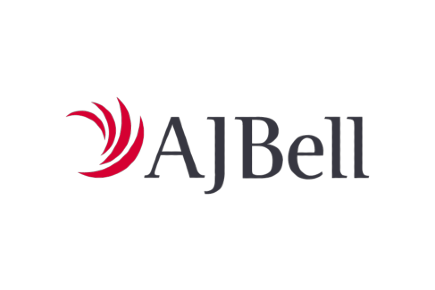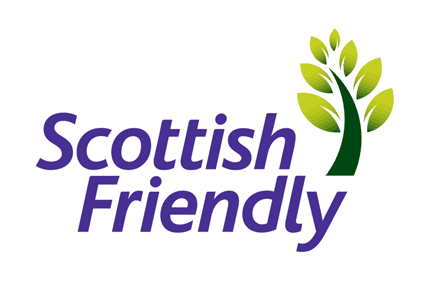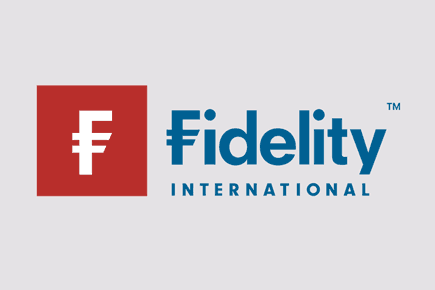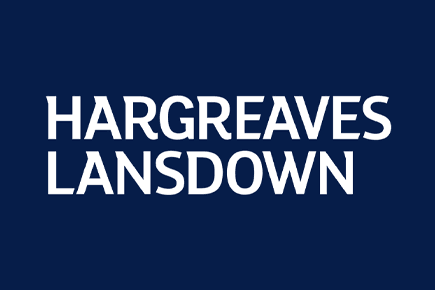A Junior ISA is the most tax-efficient way for parents to save for their children. It allows savings of up to £9,000 this tax year and the money can’t be accessed until the child turns 18. In my fully updated guide, I’ll look at the cost, customer service, and performance of the junior ISAs on offer so parents can make the best possible decisions for their children.
Browse the best Junior ISA providers in 2025
See the best JISA providers below before reading more detailed junior ISA reviews further down this guide.
Top JISA’s at a glance
- Minimum investment: £500 lump sum or £25 per month
- Annual charge: 0.25%
- Dealing charge: From £1.50 per deal online
AJ Bell has a clean, easy-to-use app to enhance your Junior investment ISA trading experience and I found the customer service experience to be excellent.
Of course with AJ Bell they do offer a range of funds to hold within their Junior investment ISA that allow you to take a back seat and let their experts do the hard work for you. However, if you would like to take a more hands on approach to your portfolio they do offer plenty of guides, along with a well-researched list of over 70 active and passive funds to get you started including ethical funds and overseas markets.
Importantly AJ Bell works out as one of the cheapest options for a Junior investment ISA and has no fees for account setup, cash holding or cash withdrawals.
Important: AJ Bell doesn’t offer advice
Capital at risk.
Best for sign-up bonus
- Minimum investment: £10 per month
- Annual charge: £1.5%
- 9 funds available
There are 9 funds to choose from when you open a Junior ISA with Scottish Friendly, and you only need to commit to £10 a month to do so, or a lump sum of £50. One of the good things about this Junior ISA is the flexibility to increase or decrease your payments at any time.
Anyone can pay money in and when you open a Junior ISA for your child, you will automatically attract a £50 bonus which remains in their ISA as long as you stay invested for 5 years.
The cost of this Junior ISA is pretty high when compared to other providers which is worth considering as this can eat into your investment gains.
Capital at risk.
Best for zero service fees
- Minimum investment: £1,000 lump sum or £25 per month
- £10 share dealing charge, free to deal funds
- 3,000 funds available
Fidelity Investments has an excellent Junior investment ISA although whilst they have waived the charge for buying and selling funds they can still work out expensive for dealing shares.
For self invested account holders they offer guides in three formats:
- Navigator: Fidelity collects information about your priorities and utilises this to provide you with fund options for your consideration.
- Select 50: This is a collection of 50 of the Fidelity experts favourite funds.
- Investment Finder: A powerful search tool which can filter thousands of investments on offer to help you find the most suitable one for you.
Capital at risk.
Best for low cost share dealing
- Minimum investment: £100 lump sum or £25 per month
- Annual charge: 0.45%
- Share trades £5.95 each
With low cost dealing charges, this is the perfect platform for parents who expect to trade regularly on behalf of their children.
In terms of investment options you couldn’t want for much more as they offer over 3,000 funds from both the UK and overseas including investment trusts, bonds, and exchange-traded funds (ETFs).
Hargreaves Lansdown employs a team of analysts to create a Wealth Shortlist of funds that have been scrutinised to identify the greatest long-term performance potential to help you create a well diversified portfolio within your Junior ISA.
Capital at risk.
Best for large portfolios
- Minimum investment: Any lump sum or £25 per month
- Free with a £9.99 a month trading account or ISA
- Dealing charge: £5.99 per trade, first monthly trade is free
For investors who already have an account with Interactive Investor, this can work out as the cheapest Junior ISA available as there are no charges for existing ii account holders.
Interactive Investor also have an award winning web and mobile trading platform with an option for ethical investing which is gaining momentum as a socially responsible and profitable way of investing.
Capital at risk.
What is a Junior ISA?
A Junior Individual Savings Account (Junior ISA or JISA) is a type of tax-advantaged savings account available in the United Kingdom. It is specifically designed for parents, guardians, or family members to save money for a child’s future. Junior ISAs were introduced to encourage long-term savings and investment for children, allowing them to have financial resources when they reach adulthood.
Key features of a Junior ISA include:
- Tax Advantages: Just like other types of ISAs, Junior ISAs offer tax benefits. Any interest, dividends, or capital gains earned within the account are tax-free. This means that the growth of the invested funds is not subject to income tax or capital gains tax.
- Contributions: Family members and friends can contribute to the child’s Junior ISA, up to an annual contribution limit set by the government. This limit may change from year to year and is designed to prevent large sums of money from being accumulated within the account.
- Withdrawal Age: The funds within a Junior ISA are locked away until the child turns 18. At that point, the account automatically converts into a standard adult ISA, and the child gains full control over the funds. They can either withdraw the money or continue to let it grow tax-free.
- Transfer: If the child already has a Child Trust Fund (CTF), a similar savings scheme that was available before Junior ISAs were introduced, it is possible to transfer the CTF to a Junior ISA. This allows families to take advantage of the benefits provided by Junior ISAs.
- Parental Responsibility: While parents or guardians manage the Junior ISA until the child reaches the age of 16, the child gains control over the account and its funds once they turn 18. It’s up to them to decide how to manage the money at that point.
Types of Junior ISA
There are two main types of Junior ISAs:
1. Junior Stocks and Shares ISAs
A Junior stocks and shares ISA is atax free investment account that will grow in line with the performance of the stocks and shares your money is invested in. This has the greater potential for growth, as well as the greater potential for risk.
2. Junior Cash ISAs
A Junior cash ISA is a tax free savings account where the child will earn interest on any cash within the account. This is the least risky option, offering complete security, however money held within this account may not grow at the same rate as inflation and thus lose value over time.
Outside of cash junior ISAs, children are taxed at the same rates as adults. Within cash junior ISAs the money you save is as safe as it would be with any other savings account and you are guaranteed to get back what you have deposited plus any interest earned on that amount.
Cash junior ISAs are the most tax efficient way to save for your child.
The interest rates on a junior cash ISA vary from provider to provider so it is prudent to compare rates before opening an account.
In this guide I look at ways of distinguishing how you find the best Junior ISA account for you, including an indepth look at both best Junior Stocks and Shares ISAs (otherwise known as an investment ISA) and best Junior Cash ISAs for tax free savings.
There are two main ways that you can invest money for growth within a Junior stocks and shares ISA:
1. Self-invested stocks and shares junior ISA
This provides scope for you to choose your own investments in a do-it-yourself ISA
2. Ready-made stocks and shares junior ISA
For less experienced investors this allows you to select a fully managed portfolio that suits your level of risk.
Unless you are knowledgeable about the market, and have the time to study and analyse its ebbs and flows, you may want to opt for a ready-made portfolio where you can ‘set it and forget it’ and leave the self investment ISAs until you have built more confidence in the market.
Be aware that your capital is always at risk when you invest in the stock market.
The best cash junior ISA rates
When choosing a cash junior ISA account, the most important consideration is the interest rate. Listed below are the best ISA rates available today on Junior cash ISAs at UK banks and building societies.
Please note that interest rates do fluctuate and these figures may change.
| Cash Junior ISA Provider | AER Interest Rates* |
|---|---|
| Leek United BS | 2.30% |
| Cumberland BS | 2.25% |
| Tesco Bank | 2.25% |
| National Savings & Investments | 2.20% |
| Stafford Railway BS | 2.20% |
* Rates checked 9th August 2022 – Source: MoneyFacts
As previously mentioned, ISA rates can change and it would therefore be prudent to check interest rates on a regular basis and transfer money between Junior Cash ISAs where appropriate.
Also consider: Will ISA rates go up?
We have already established that a cash junior ISA will attract interest as laid out by the provider, and a stocks and shares junior ISA will attract investment growth. So how do you distinguish which of these options is better for you?
According to HMRC, the majority of parents are still choosing to open a cash junior ISA for their children. However, this may not be the best option despite offering the least risk. This is because interest rates are historically low, whilst inflation continues to rise at a rate which will erode away at your child’s savings over time.
Within a stocks and shares junior ISA your deposits are invested on the stock market with the aim to grow your cash tax free over time.
Historically stocks and shares junior ISAs do better than a cash junior ISAs long term, providing you with a greater return on your investment tax free. However, this is not without some degree of risk and your capital can go down as well as up with the volatility of the stock market.
Advantages and disadvantages of opening a junior ISA
Advantages
- Effective saving tool for parents who have already maxed out their own ISA allowance.
- Helps children to learn about saving and investing.
- Provides a nest egg for your child.
- Means for reducing your inheritance tax bill.
Disadvantages
- Money is released to the child on their 18th birthday, at which time they can do with it as they wish.
Junior ISA rates FAQs
How can junior ISAs help teach children about saving?
The very process of opening a junior ISA account, with your child, can help get them started in the world of finance and teach them valuable lessons about saving.
As they learn to take their time to find the best provider and then watch their pot grow, they will be less likely to spend the money when they turn 18 and more inclined to continue with an adult ISA which could lead to a nest egg as substantial as a house deposit.





